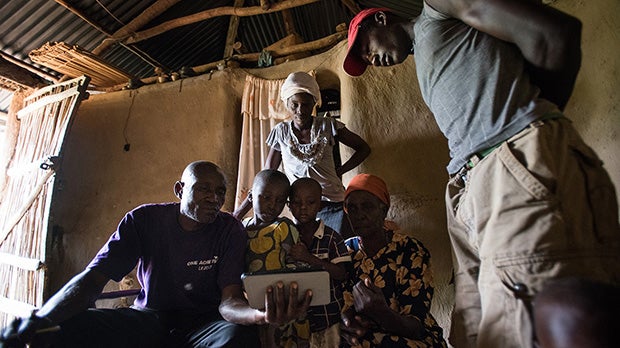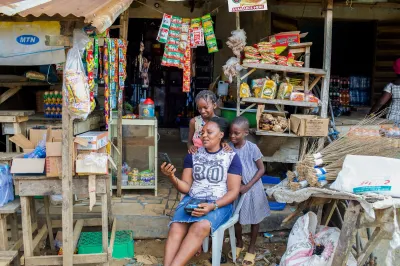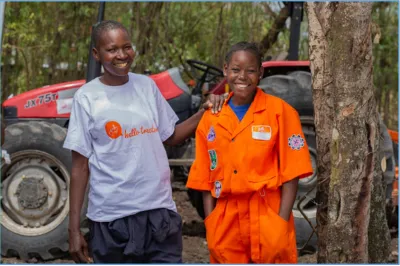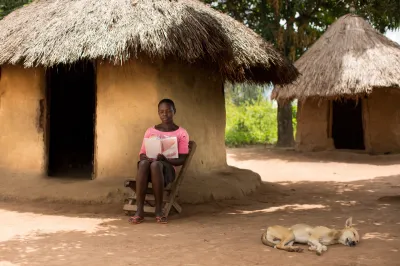What Can Traditional Giving Teach Digital Fundraising Platforms?
Peer-to-peer digital fundraising platforms are becoming more popular as a way for people to reach a broader financing network beyond their immediate family and friends. But they’re not entirely new. They’re a digital version of more traditional kinds of charitable giving that exist in many cultures. And new research out of Kenya suggests that FinTechs and financial services providers learn from these deep-rooted fundraising traditions to make their twenty-first century financial services more effective.

Kenya has a long tradition of communal fundraising called harambees (Swahili for "all pull together"). Participants in these community fundraisers contribute money to cover other low-income people’s everyday financial needs, such as medical expenses, funerals and school fees or to raise funds for entrepreneurial activities. Especially for people who are financially excluded, this pooling of resources can present an important lifeline. Harambees may help people cope with immediate liquidity needs when faced with income shocks.
The benefits of receiving money through harambees are evident, but the factors motivating people to contribute money aren’t. To better understand low-income people’s motivations for charitable giving in Kenya, CGAP partnered with digital fundraising platform M-Changa and the Busara Center for Behavioral Economics. A series of lab experiments with 664 people from Nairobi’s Kibera slum revealed that people have three main motivations for giving: trust, reciprocity and altruism. Trust is when a giver contributes funds as a form of informal insurance for the future, expecting the recipient to reciprocate when a need arises. Reciprocity refers to when a giver repays an act of giving. Altruism is when a giver contributes without expecting anything in return.
We found that, regardless of M-Changa givers’ motivations, they contributed more when they believed they had something in common with recipients. They contributed the most when they perceived themselves to be part of the same social group, even when there was not a direct or known connection. Contribution amounts were also higher when recipients were part of a giver’s existing social network. Amounts given to a close family member or friend were higher than those given to a stranger, suggesting that fundraisers rely heavily on their social networks for contributions. Women have proven to the strongest fundraisers on M-Changa because they have robust networks and are trusted.
We found that a few other factors strongly influenced giving, too. If someone learned that others were giving more than they were, they were more likely to increase their contributions. Communication between givers and recipients also fostered greater contributions by building trust and possibly a sense of shared identity.
What does all this mean for providers of digital fundraising platforms?
First, anchoring fundraising messages around the three key motivators could increase use. For example, a heading that reads “Give today, receive tomorrow” could inspire reciprocity-driven contributions. A message like “Giving now increases your chance of succeeding with a future fundraising campaign” could be used to encourage trust-driven giving.
Second, fostering a greater sense of community on a fundraising platform is likely to increase use. One way to create a sense of shared identity is to allow users to display their affiliations, such as their universities or chamas (traditional savings groups), and to form interest-based groups online. But providers could also add gamification elements to strengthen ties among people who don’t have real-world ties. For example, a provider could display to all users a ranking of the week’s top fundraisers and reward the winner by contributing to his or her campaign. Providers could also include features like message boards or chat rooms that make it easier for users to communicate and build trust.
M-Changa is already incorporating some of these findings into its product design. Here are a few examples:
- Allow bundling. In a harambee, a trusted member of a community often collects money from several people and contributes it to a fundraiser. M-Changa introduced a bundling feature to allow this practice digitally. Behaviorally framed messages call bundlers to action and encourage sharing within their networks.
- Leveraging peer effects. Recognizing the power of shared social identities, M-Changa has enlisted chama members to act as fundraiser patrons. The idea is to leverage the trust and sense of reciprocity within chama networks to increase contributions on the platform.
- Applying matched funds. M-Changa started a matching funds program. It has found that matching users’ contributions incentivizes people to give more and to mobilize other givers, increasing the number of people who meet their fundraising goals.
As technology becomes ever more central to financial relationships, understanding the drivers of traditional giving among low-income populations is a first step toward designing better digital fundraising solutions. If technology can maintain the core elements that have traditionally driven use while reducing costs and expanding networks, it can deliver products that meet people’s needs and are actively used.
A supplementary slide deck is available here.




Add new comment